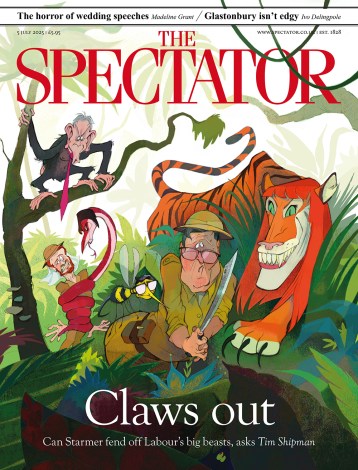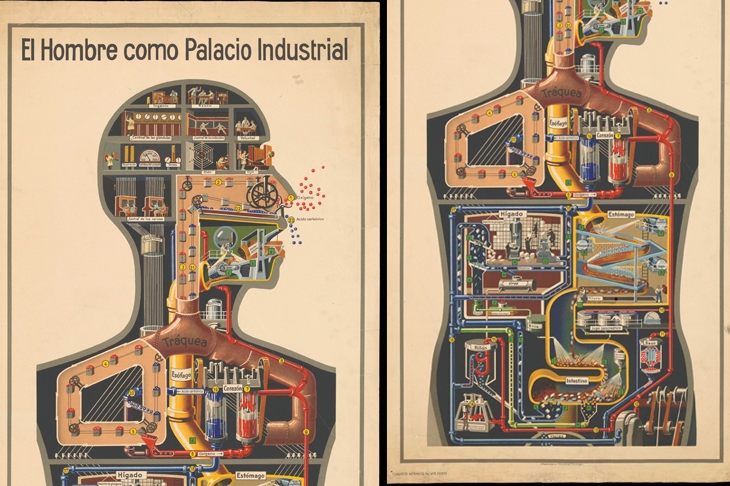Exhibit A. It is 1958 and you are barrelling down a dual carriageway; the 70 mph limit is still eight years away. The road signs are nearly illegible. You miss your turning, over-correct, hit a tree and die.
The following year, graphic designer Margaret Calvert is driving her Porsche 356c along the newly built M1. The motorway signs are hers. It is information design of a high order, possibly even life-saving. The clarity and intelligence of Calvert’s British road signs remain unmatched nearly 60 years later. And the font she created became the NHS, and later rail and airport, standard.
Exhibit B. The French are worried about nuclear waste. Given the half-life of radio-active detritus, warning signs must be legible in 100,000 years when written language may be redundant. After all, the alphabet is simply a primitive sort of code. Nuclear sites require signs as chillingly effective as the medieval Plague Cross, a red mark daubed on the door of infected properties.
How signs and symbols warn us about danger and contagion is the subject of Can Graphic Design Save Your Life? In 2012 Australia demanded standardised packaging for cigarettes. Out went brands aiming to seduce with jolly jack tars, camels and cowboys; in came a brief that required the product to look disgusting. A drab colour known as Pantone 448C was chosen after market research determined that it was exceptionally repellent. And the law demanded that 60 per cent of the pack’s surface be covered with grisly photographs of tumours and lesions. (Rather as if, in the interests of road safety, Calvert’s Porsche were required to be covered with pictures of harrowing traffic accidents.)
But constraints can be stimulating: a wittier response to cigarette deterrence came from a British design group called Build, who reimagined Marlboro packs in machine-readable OCR-B font with a QR code linking to an anti-smoking site. You are warned that each cigarette knocks 11 minutes off your life since you are filling your lungs with cyan-hydric acid, also found in Nazi gas chambers.
Then there is sex, stigmatised long before smoking. But the old venereal diseases now seem quaint compared with the more recent horrors of Aids. A 1943 poster gently warns the romantically inclined, but careless, that VD will be ‘A shadow on happiness’, but the government’s Aids public-health campaign of 1987, a world first, was much bleaker. The TBWA agency hired Nic Roeg to direct the ad and wrote a stark copyline: ‘Don’t Die of Ignorance.’ Crucially, a black tombstone was an unforgettably scary motif. For Benetton’s influential Colors magazine, Oliviero Toscani and Tibor Kalman did similarly radical spreads about Aids: frank but visually witty too, these were the best magazine graphics of the 1980s and 1990s.
Graphics and medicine have a shared history. The first pop-up anatomy book appeared in the 16th century, as significant an event in the history of illustration as in the history of medicine. Fibrox probes now examine our guts, but the windings of the alimentary canal were once the province of art: Gray’s Anatomy of 1858 depended not on photographs but on illustrations by Henry Vandyke Carter.
At the Wellcome, one of the most striking images is a 1926 poster by Fritz Kahn, ‘Der Mensch als Industrieplast’. In synch with the Corbusian techno-romanticism of the day, Kahn shows the body as a machine for living in, not so much a sacred temple as a churning and industrious factory.
This is an engrossing and original exhibition. Curators Rebecca Wright and Lucienne Roberts make a vital case for graphics, but paradoxically, the display betrays the weaknesses of the exhibition medium as a communication tool. While individual items have immense power, the exhibition design itself lacks synoptic force and coherence. It was a neat idea to use hospital screens as dividers, but they create a sense of improvisation.
Still, I was beguiled and left full of fine thoughts and contemplations. Is it because the human mind makes an easy association between visual precision and health that so much medical typography is sans serif?
Exhibit C. One of the greatest-ever exercises in Big Pharma corporate identity, a process actually begun by Sir Henry Wellcome, was conducted by Geigy in the 1950s. The Akzidenz-Grotesk font was paired with clever picture research to make astonishingly beautiful and comfortingly modern packaging, generously displayed at the Wellcome. The Swiss Style was defined by medicine, not chocolate.
As you leave the Wellcome and walk past the new University College Hospital, Margaret Calvert’s 2008 reworking of her original font, known as Rail Alphabet, is unavoidable in the blizzard of signage. It’s a visual language of clarity, but not of warmth. What about redesigning hospitals to make them more amusing, or rebranding diseases and disorders to make them less frightening? Might it be better if the intimidating A&E sign looked like the trashy retro-kitsch of ‘Welcome to Las Vegas’? Or your statins were packaged like Château d’Yquem?
Sure, graphics can save your life. They can also make you think.






Comments